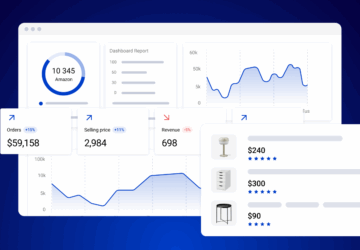Artificial intelligence is no longer a frontier for just researchers and large enterprises. The past three years have radically lowered the barrier to entry for building AI-powered applications, thanks to pre-trained models, scalable APIs, vector search engines, and no-code platforms. But for all the noise in the space, not every tool is good, and not every “AI solution” is grounded in technical rigor. You can read more on AI project implementation for in-depth insights.
This guide unpacks today’s most capable AI tools and platforms, not by hype, but by architecture, use case, and operational reality. Whether you’re building a generative chatbot, deploying a custom vision model, or orchestrating LLM agents, here’s a closer look at what works, why it matters, and where the trade-offs begin.
OpenAI Platform: API-First Generative Intelligence
For developers prioritizing fast deployment and best-in-class natural language processing, OpenAI’s platform remains a cornerstone. As of mid-2025, it offers access to GPT-4-turbo, DALL·E 3, Whisper, and powerful embedding models—all via a RESTful API or hosted playground.
Key Use Cases:
- Summarization, semantic search, Q&A, and language translation
- Code generation and explanation via Codex descendants
- Image generation for marketing, UI design, or prototyping
Architecture Notes:
- Models run inference in OpenAI’s infrastructure—no local fine-tuning
- Supports function calling and tool use (e.g., OpenAI assistants API)
- Pricing is tiered and usage-based, with GPT-4-turbo offering a significant speed-to-cost advantage
Real-World Integration:
- Notion AI integrates GPT-4 for content enhancement
- Duolingo uses GPT-4 to personalize language lessons
- Zapier added GPT-powered natural language automation in workflows
Trade-Offs:
- Closed-source black box
- High compliance scrutiny (SOC2, but not HIPAA-ready out of the box)
- Requires tight prompt engineering for precision
Google Vertex AI: Enterprise-Grade ML from Pipeline to Deployment
Google’s Vertex AI targets organizations needing full-stack ML lifecycle management—from data ingestion and labeling to model deployment and monitoring. While more complex than OpenAI’s plug-and-play APIs, Vertex AI delivers end-to-end control.
Strengths:
- Seamless integration with BigQuery, Dataflow, and Cloud Storage
- Supports custom training, AutoML, and pre-trained APIs (vision, NLP, tabular)
- Enables container-based model deployment with scaling policies
Case Study:
The Mayo Clinic used Vertex AI to develop predictive modeling tools for patient readmission risk—combining structured health data with medical imaging workflows.
Limitations:
- Steeper learning curve
- Cloud-only: vendor lock-in risks apply
- Best suited for teams already within the GCP ecosystem
Hugging Face: The OSS Hub for Pretrained Transformers
If you’re looking for transparency, reproducibility, and model experimentation, Hugging Face is the de facto community epicenter for open-source AI. The Hugging Face Hub offers access to thousands of fine-tuned models, from BERT and T5 to Mistral-7B and CodeLLaMA.
Components:
- transformers library (model loading and inference)
- datasets and evaluate modules for benchmarking
- Hugging Face Spaces for deploying demos (powered by Gradio or Streamlit)
Standout Features:
- Models can run locally or via inference endpoints
- Integration with hardware accelerators (like AWS Inferentia or NVIDIA Triton)
- Fine-tuning available through PEFT (parameter-efficient fine-tuning) techniques
Real-World Uses:
- Call center summarization tools using DistilBERT
- AI research workflows benchmarking multilingual models
- Embedded models in privacy-sensitive environments
LangChain: LLM Orchestration with Memory, Agents, and Tools
As LLM applications mature beyond chatbots, developers are turning to LangChain to build context-aware, tool-using, agent-based applications. LangChain abstracts the logic of multi-step tasks and memory management for LLMs.
Core Concepts:
- Chains: reusable sequences of LLM calls (e.g., prompt → parsing → decision)
- Agents: LLMs with access to tools like web search, code execution, or calculators
- Retrieval-Augmented Generation (RAG): injecting real-time data from vector databases
Architecture Footprint:
- Works with OpenAI, Cohere, Anthropic, and OSS models
- Pluggable with vector DBs (Pinecone, Weaviate, FAISS)
Notable Users:
- AI startups building personalized tutors, customer support agents
- Internal productivity bots across SaaS platforms
Limitations:
- Still evolving; bugs and breaking changes are frequent
- High memory requirements for long-context tasks
Amazon SageMaker: MLOps for the Fortune 500
SageMaker is Amazon’s flagship ML platform, designed for massive-scale data science and deployment. While less accessible for hobbyists, it’s indispensable in regulated industries.
Highlights:
- AutoML, notebooks, model registry, and inference pipelines
- Built-in monitoring and drift detection
- Compliant with HIPAA, ISO, and PCI standards
Case:
Siemens Healthineers deployed diagnostic models trained and hosted via SageMaker, maintaining traceability for medical compliance.
Best Fit For:
- Enterprises with in-house ML teams
- Workloads needing governance, reproducibility, and audit trails
No-Code/Low-Code Platforms for Rapid Prototyping
For non-engineers or teams building MVPs, tools like Peltarion, Lobe, and Make.com AI modules offer visual model builders and pre-configured components.
Key Traits:
- Drag-and-drop UI
- Limited but focused AI functionality (image tagging, text classification)
- Export to API or spreadsheet logic
Industry Trend:
Gartner’s 2024 report on “citizen developers” projects that no-code AI will power 40% of internal business tools by 2027—especially in marketing and operations.
Caveats:
- Limited control over model architecture
- Poor suitability for complex, novel use cases
Domain-Specific Tools: Specialized Infrastructure
RunwayML – Creative suite for generative video, image editing, and VFX.
Replica Studios – AI-generated voice actors for games and film.
Weights & Biases – Experiment tracking, model visualization, and hyperparameter sweeps.
Pinecone / Weaviate – Vector databases optimized for semantic search and hybrid retrieval.
These tools fill gaps left by general platforms, especially in creative AI, voice tech, and retrieval-augmented generation (RAG) pipelines.
Choosing the Right Tool: Context Over Popularity
Before committing, weigh the following:
- What’s your data modality? (Text, image, audio, tabular?)
- Do you need control or speed? (Fine-tuning vs. plug-and-play)
- Is privacy or compliance a concern? (GDPR, HIPAA, SOC2?)
- What does your team know already? (Avoid overengineering)
As Andrew Ng advises: “Start simple. Validate usefulness. Then invest in scalability.”
Bottom Line
AI tooling in 2025 has never been more accessible—or fragmented. From pretrained foundation models and orchestration frameworks to domain-specific utilities and open-source libraries, there’s a platform for nearly every use case.
But what makes the difference isn’t just power or price—it’s alignment. The right tool is the one that fits your problem, your team, and your infrastructure. Ignore the hype. Understand your stack. Build accordingly.








